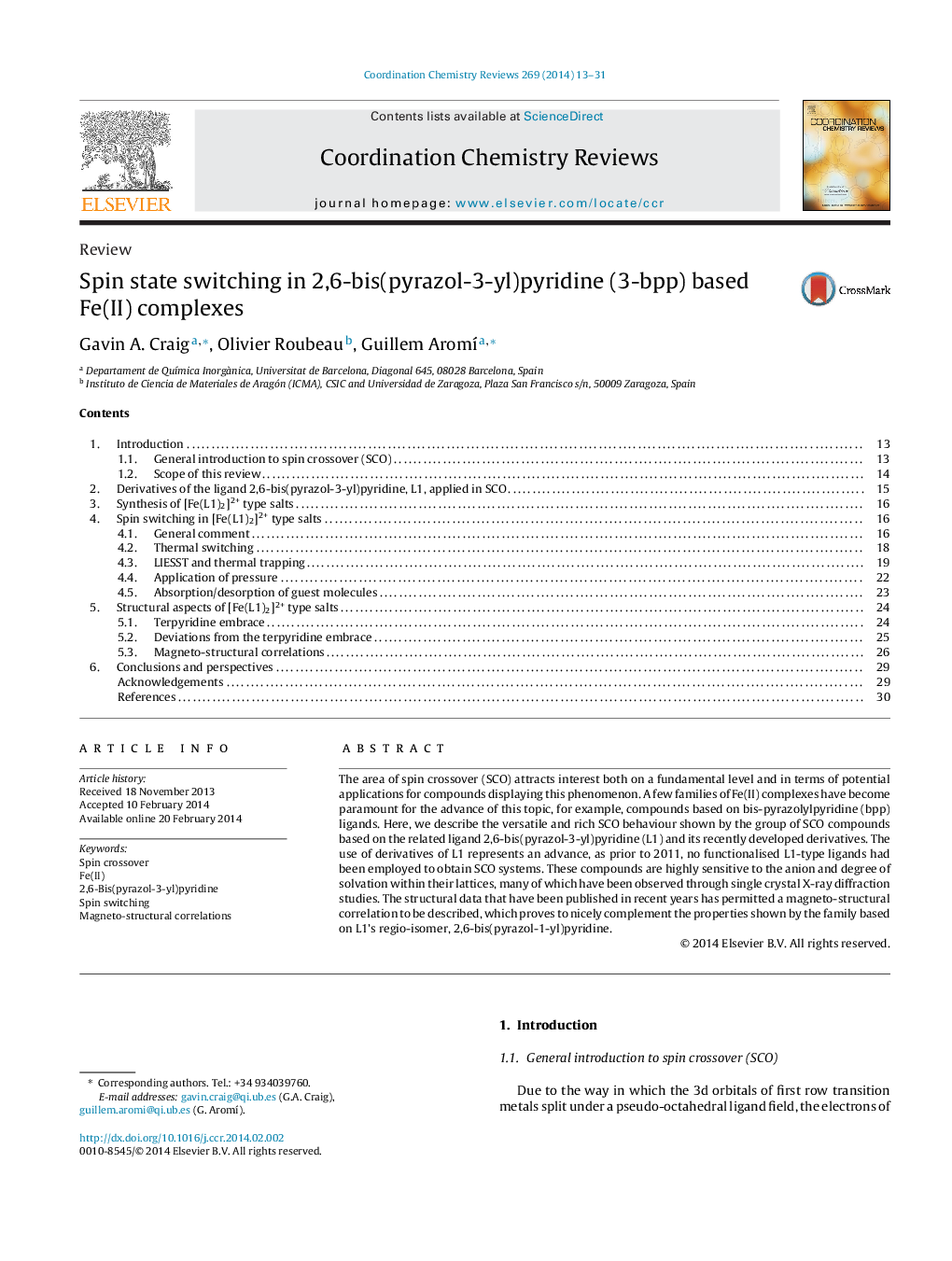| Article ID | Journal | Published Year | Pages | File Type |
|---|---|---|---|---|
| 1300983 | Coordination Chemistry Reviews | 2014 | 19 Pages |
•The synthesis of the new family of 2,6-bis(pyrazol-3-yl)pyridine type ligands (3-bpp) is reviewed.•A focus on SCO compounds of 3-bpp ligands is made, comprehensively, for the first time.•This family of compounds has exhibited most known mechanisms of spin switching, affording novel features.•3-bpp SCO compounds have offered a chance to examine, in this paper, structural correlations with magnetic properties.
The area of spin crossover (SCO) attracts interest both on a fundamental level and in terms of potential applications for compounds displaying this phenomenon. A few families of Fe(II) complexes have become paramount for the advance of this topic, for example, compounds based on bis-pyrazolylpyridine (bpp) ligands. Here, we describe the versatile and rich SCO behaviour shown by the group of SCO compounds based on the related ligand 2,6-bis(pyrazol-3-yl)pyridine (L1) and its recently developed derivatives. The use of derivatives of L1 represents an advance, as prior to 2011, no functionalised L1-type ligands had been employed to obtain SCO systems. These compounds are highly sensitive to the anion and degree of solvation within their lattices, many of which have been observed through single crystal X-ray diffraction studies. The structural data that have been published in recent years has permitted a magneto-structural correlation to be described, which proves to nicely complement the properties shown by the family based on L1's regio-isomer, 2,6-bis(pyrazol-1-yl)pyridine.
Graphical abstractFigure optionsDownload full-size imageDownload high-quality image (136 K)Download as PowerPoint slide
